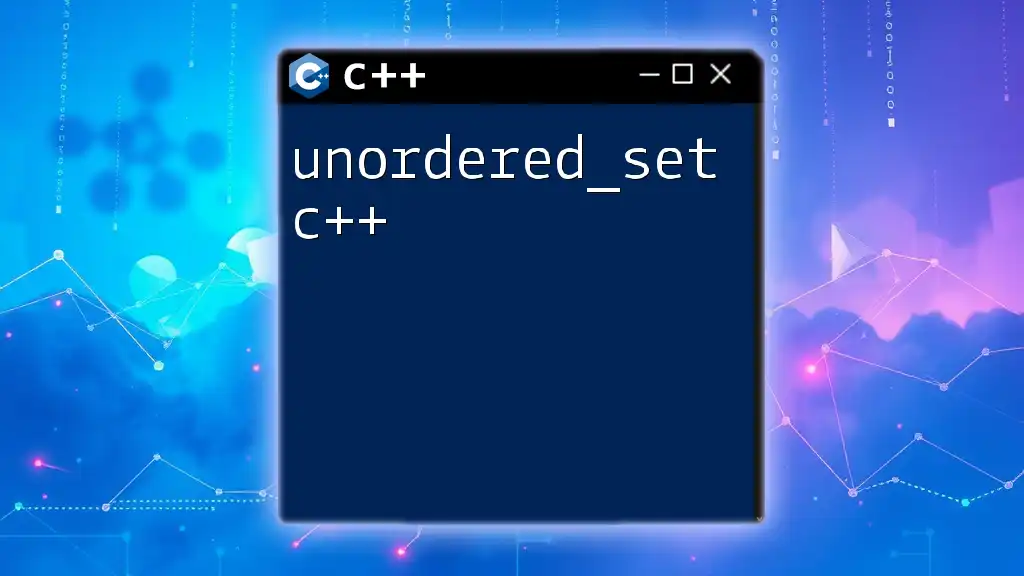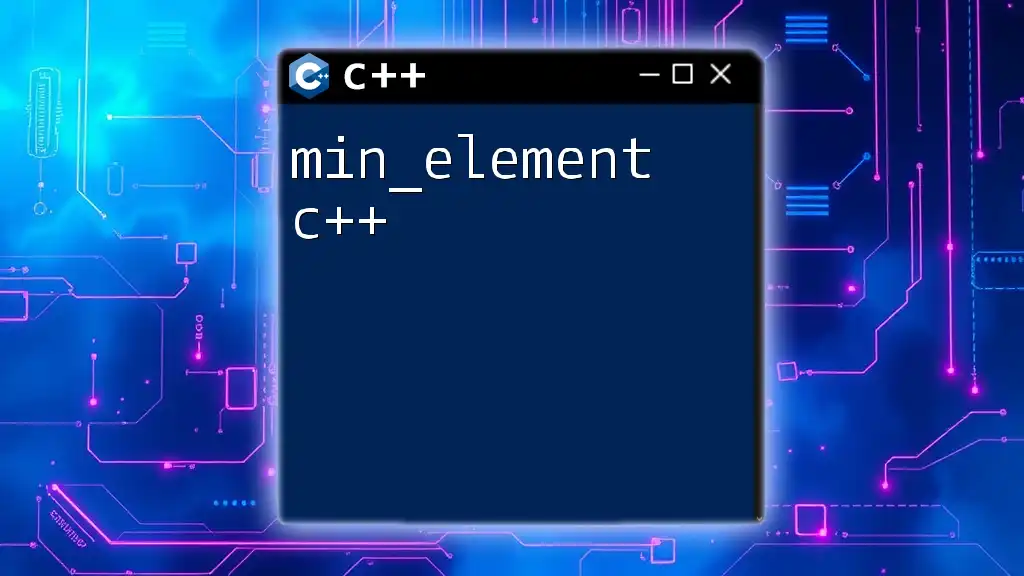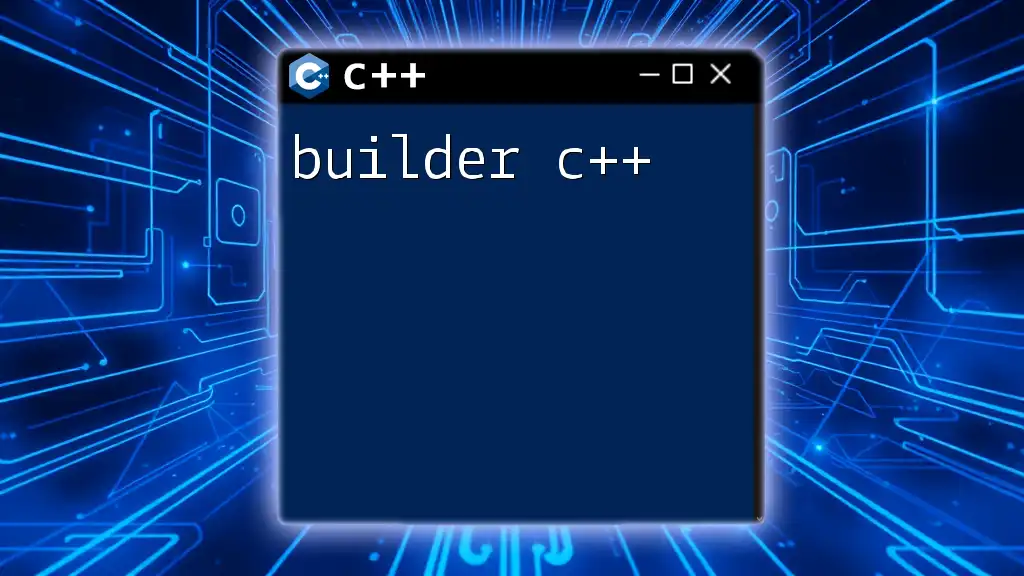An `unordered_set` in C++ is a container that stores unique elements in no particular order and provides average constant-time complexity for insertions, deletions, and lookups.
#include <iostream>
#include <unordered_set>
int main() {
std::unordered_set<int> mySet {1, 2, 3};
mySet.insert(4);
mySet.erase(2);
for (const auto& elem : mySet) {
std::cout << elem << " ";
}
return 0;
}
Introduction to `unordered_set`
An `unordered_set` is a powerful associative container in C++ that stores unique elements without any particular order. This container is part of the C++ Standard Library and is defined in the `<unordered_set>` header. Understanding `unordered_set` is crucial for writing efficient C++ programs since it combines the properties of a set—storing unique elements—with the performance benefits of hash tables.
The core distinction between `unordered_set` and other containers, such as `set` and `vector`, lies in their storage methodologies. While a `set` maintains elements in a specific order and permits logarithmic time complexity for insertions and deletions, an `unordered_set` leverages hash functions to achieve average constant time complexity for these operations. This makes `unordered_set` an excellent choice for situations that require fast access and insertion of unique items.
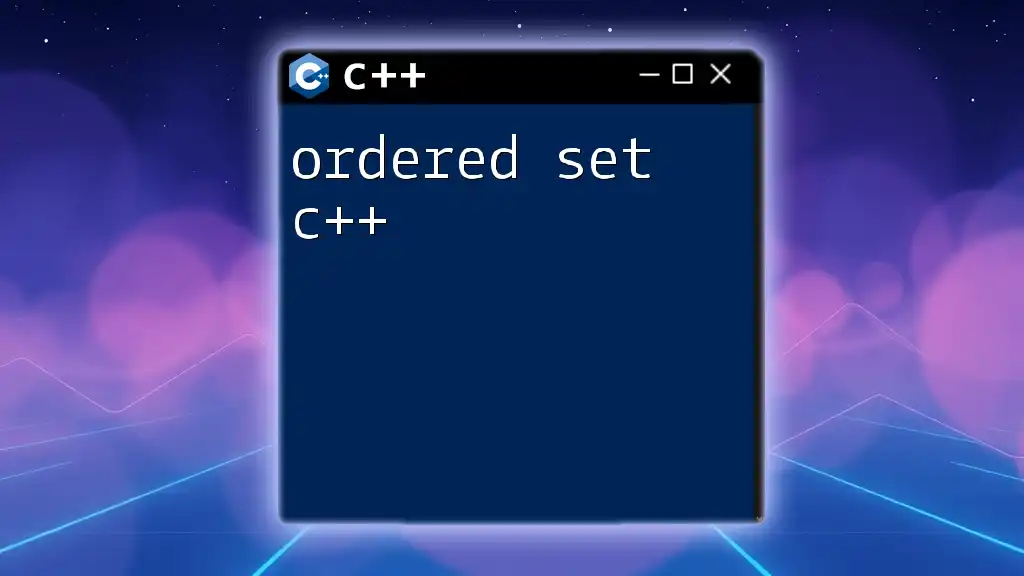
Understanding Hash Tables
What is a Hash Table?
A hash table is a data structure that implements an associative array, a structure that can map keys to values. In an `unordered_set`, the keys themselves are the elements stored within. Each element is associated with a unique hash code, calculated via a hash function. This hash code is then used to determine the position in memory (or "bucket") where the corresponding value will be stored.
How Hashing Works
Hashing is the process of transforming input data (the keys) into a fixed-size value (the hash). This transformation is performed by a hash function, which helps position the elements in the underlying array. Due to the possibility of different keys generating the same hash (known as a collision), various strategies exist for resolving these collisions, such as chaining or open addressing.
In practical terms, a simple hash function might sum the ASCII values of the characters in a string and then take the modulo of that value with the size of the underlying array. Understanding how hashing works is vital for effectively using `unordered_set` to prevent performance degradation due to excessive collisions.

Declaring and Initializing `unordered_set`
Syntax for Declaration
Declaring an `unordered_set` is straightforward. Here's a basic syntax example:
#include <unordered_set>
std::unordered_set<int> intSet;
This code snippet declares a set that will store integers. Options for alternative type declarations also exist, such as for user-defined types, which will be explored in the custom hash functions section.
Initializing with Values
You can easily initialize an `unordered_set` with predefined values for convenience. Here’s how you can do that:
std::unordered_set<std::string> strSet = {"apple", "banana", "cherry"};
This initializes `strSet` with the strings “apple”, “banana”, and “cherry”. This feature enables rapid setup of your set if initial data is available.

Basic Operations with `unordered_set`
Inserting Elements
To populate the `unordered_set`, you can use the `insert()` function. You can insert individual elements as follows:
intSet.insert(10);
If you want to add multiple values at once, use the initializer list:
intSet.insert({20, 30, 40});
This flexibility makes it easy to manage larger sets of unique items quickly.
Searching for Elements
To determine if an element exists in your `unordered_set`, utilize the `find()` method. This function returns an iterator to the found element or to the end of the set if the element is not found. Here’s an example:
if (intSet.find(10) != intSet.end()) {
// Element found
}
Being aware of how to search efficiently is essential, especially in applications that rely on rapid lookups.
Deleting Elements
The `unordered_set` allows you to delete elements using the `erase()` method:
intSet.erase(20);
If you want to remove all elements from the set, the `clear()` method will come in handy:
intSet.clear();
Understanding how to manipulate the contents of your `unordered_set` is critical for building, managing, and utilizing your data effectively.

Iterating Through `unordered_set`
Using Iterators
When you need to access all elements in an `unordered_set`, using iterators is a powerful approach. Here’s how you can traverse the set using a basic loop:
for (auto it = intSet.begin(); it != intSet.end(); ++it) {
// Access *it
}
This method provides fine control over how you process each element.
Range-based for Loop
If you prefer a simpler syntax, the range-based for loop allows for easier iteration through the set:
for (const auto& element : intSet) {
// Use element
}
This simplified method enhances code readability and succinctness.

Performance Considerations
Time Complexity of Operations
Understanding the performance of `unordered_set` is essential for effective implementation. The average time complexity for insertions, deletions, and searches is constant time, O(1). However, in a worst-case scenario, such as having many hash collisions, the time complexity could degrade to O(n). Therefore, choosing an effective hash function and maintaining an optimal load factor are vital for preserving performance.
Memory Usage
The memory usage of an `unordered_set` can vary based on the load factor—the ratio between the number of elements and the total number of buckets. It is crucial to manage bucket counts and load factors appropriately to optimize memory usage and access speeds within your application.
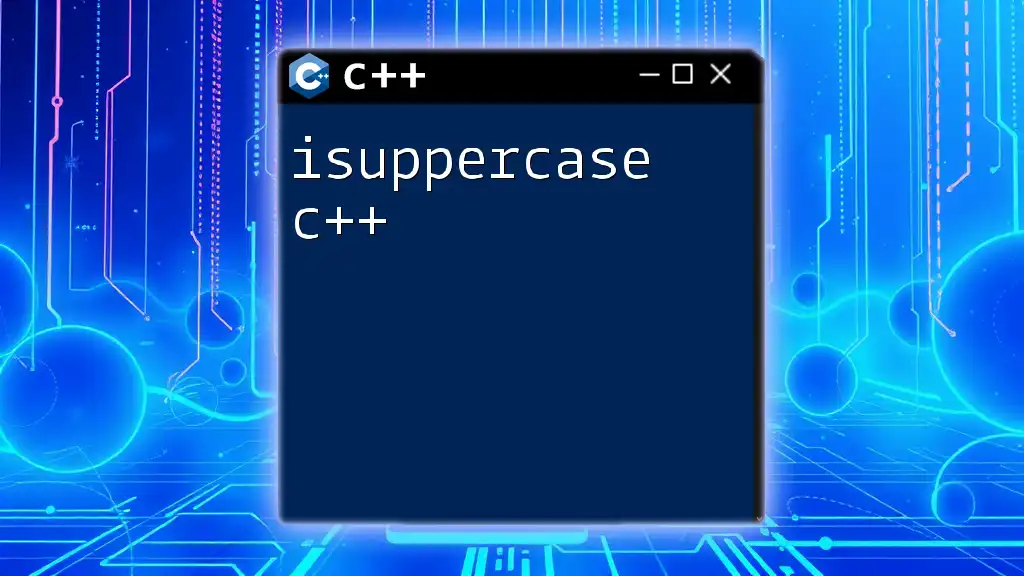
Advanced Features
Custom Hash Functions
While `unordered_set` comes with a default hash function, you can create custom hash functions for user-defined types or specialized needs. Here’s an example of how to implement a custom hash:
struct CustomHash {
size_t operator()(const MyType& obj) const {
// Custom hash logic
}
};
This enables you to optimize performance for specific data types.
Custom Comparison Functions
In cases where you need non-standard equality checks, you can define a custom comparator. This functionality is particularly useful for complex data types that have unique equality criteria.

Use Cases for `unordered_set`
Typical Scenarios
The `unordered_set` shines in situations where you require fast access and insertion of unique elements. Examples include:
- Counting unique items: If you need to track unique entries in a log file or user IDs.
- Removal of duplicates: Quickly filter duplicates from data sets during data processing.
Real-world Applications and Examples
Consider a scenario where you are implementing a contact management system. Using `unordered_set` helps efficiently manage unique contact entries, avoiding duplicate names without the overhead of sorting.
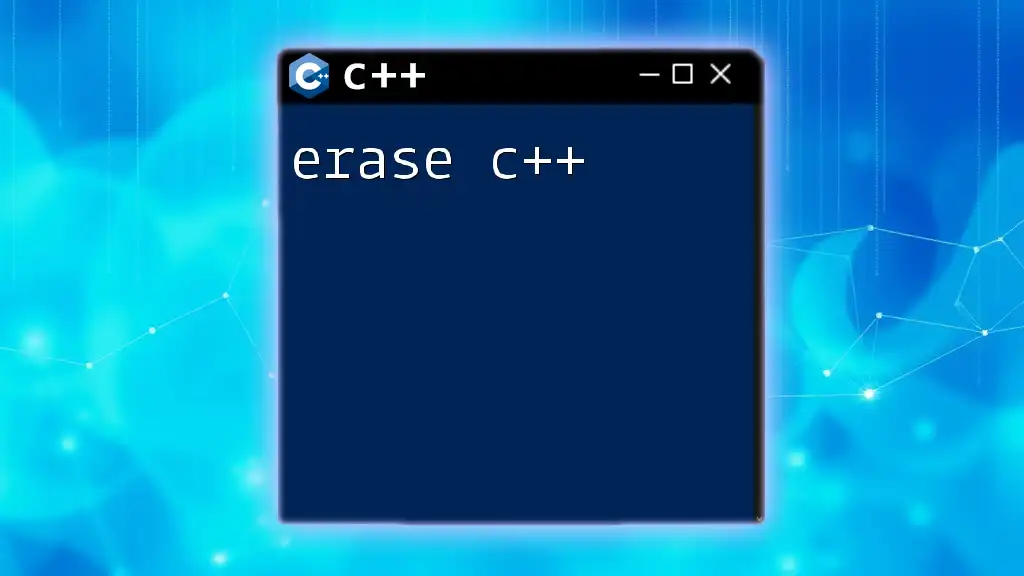
Common Pitfalls and Best Practices
Common Mistakes
Some programmers may forget to account for hash collisions, which can lead to inefficient operations. The choice of hash functions is vital; a poorly designed hash can cause loads of collisions, degrading performance significantly.
Best Practices for Using `unordered_set`
To maximize performance and efficiency when using `unordered_set`, consider the following tips:
- Select appropriate hash functions and comparators for unique data types to ensure quick lookup.
- Maintain a reasonable load factor by resizing the set as it grows.
- Avoid unnecessary copies by using `unordered_set` with pointers or move semantics for large objects.

Conclusion
In conclusion, the `unordered_set` is an essential tool in the C++ programmer's toolbox, providing unique elements with rapid access and management. By understanding its inner workings, operational methods, and best use cases, you can leverage its capabilities to enhance your applications significantly. Dive deeper into C++ containers to further bolster your programming knowledge and skills.

